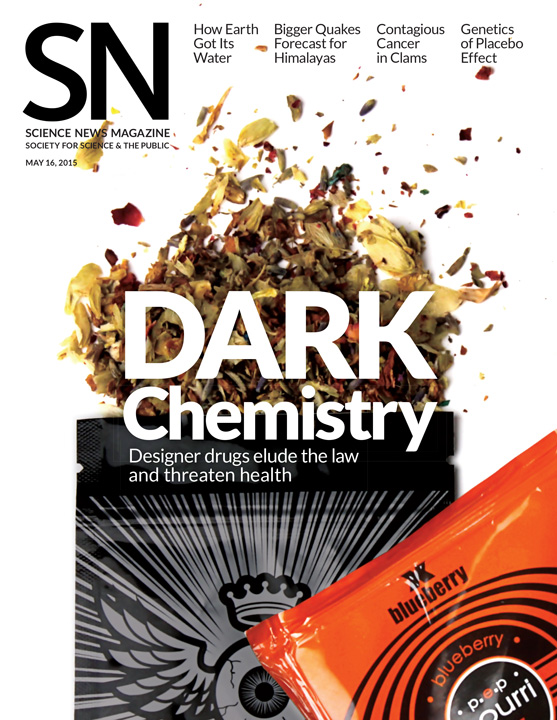Water’s origin story, science and sci-fi and more reader feedback
- More than 2 years ago
 Water from space
Water from space
A barrage of icy asteroids might have brought water to Earth. In “Water, water everywhere” (SN: 5/16/15, p. 18), Christopher Crockett described how planetary scientists are piecing together the origin story for Earth’s abundant H2O.
To figure out where Earth’s water came from, researchers looked at the ratio of hydrogen to a heavy form of hydrogen called deuterium in water samples from asteroids and comets. But reader Daryl Dubas noted that lots of chemical processes, like photosynthesis and respiration, can create and break down water molecules. “Is it not possible that these processes have some sort of predisposition towards using or creating certain variants of the water molecule that changes the deuterium-to-hydrogen ratio over time?” he asked.
Cosmochemist Conel Alexander of the Carnegie Institution for Science in Washington, D.C., responds: “The Earth is a geologically and biologically active planet that will have reworked the water many, many times.” But this wouldn’t have changed the overall deuterium-to-hydrogen ratio of Earth, he adds. Hydrogen and deuterium show up in many molecules, not just water. Deep in the Earth, for example, most of the hydrogen is stored in hydroxide ions within silicate minerals. Hydrogen and deuterium move around between hydroxide, water and other molecules, says Sune Nielsen of the Woods Hole Oceanographic Institution in Massachusetts. But unless Earth has lost a lot of hydrogen to space, which he says doesn’t seem likely, the overall ratio of deuterium to hydrogen on the planet shouldn’t change much.
Secrets of a supervolcano
Earthquake vibrations have revealed a second magma chamber lurking under Yellowstone National Park. This discovery helps explain why the park’s supervolcano expels massive amounts of carbon dioxide each day, Thomas Sumner reported in “Giant magma pool beneath Yellowstone” (SN: 5/16/15, p. 16).
“So the deeper chamber is like fudge — mostly solids and crystals, a little liquid running around in the interstices. The top chamber is like fudge sauce — mostly melted with some solids,” commented John Turner. “Back when this hot spot was powering the Columbia Group basalt eruptions in Oregon, there were weeklong lava eruptions that roughly equaled the volume of Lake Erie, banging straight up out of mile-long cracks in the Earth with zero advance notice. We should be glad the dear thing has settled down a bit.”
Where science and sci-fi meet
In “Cancerous clams and other sci-fi fodder” (SN: 5/16/15, p. 2), editor in chief Eva Emerson professed a love of science fiction. She noted that some current real-life research could stimulate the imagination just as well as any novel or movie.
“Eva Emerson’s editorial made me smile,” said former physicist and full-time writer Steve Moore in an e-mail. “I cut my reading teeth on sci-fi. More importantly perhaps, I often use SN for background material in my sci-fi, giving credit at the back of the book. As scientists-turned-writers, we’re often too specialized and need to refer to good, coherent summaries about new science and technology happening outside our chosen fields.”
Correction
In “Food fight” (SN: 5/30/15, p. 18), the bile produced by the liver should have been described as a digestive fluid, not an enzyme.







